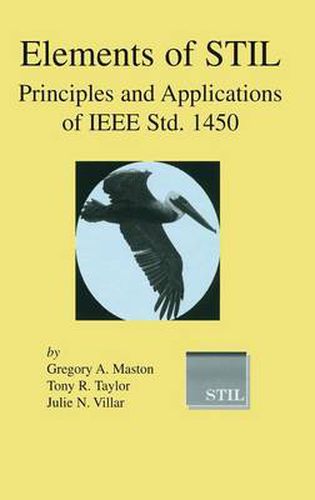Readings Newsletter
Become a Readings Member to make your shopping experience even easier.
Sign in or sign up for free!
You’re not far away from qualifying for FREE standard shipping within Australia
You’ve qualified for FREE standard shipping within Australia
The cart is loading…






This title is printed to order. This book may have been self-published. If so, we cannot guarantee the quality of the content. In the main most books will have gone through the editing process however some may not. We therefore suggest that you be aware of this before ordering this book. If in doubt check either the author or publisher’s details as we are unable to accept any returns unless they are faulty. Please contact us if you have any questions.
The Standard Test Interface Language (STIL) provides an interface between digital test generation tools and Automated Test Equipment. STIL is identified in the scope of IEEE Std. 1450-1999 as a test description language that: (a) facilitates the transfer of digital test vector data from CAE to ATE environments; (b) specifies pattern, format, and timing information for defining the application of digital test vectors to a device under test (DUT); and © supports the volume of test vector data generated from structured tests such as scan/automatic test pattern generation (ATPG), integral test techniques such as built-in self test (BIST), and functional test specifications for IC designs and their assemblies, in a format optimized for application in ATE environments. This book elaborates on the definition of STIL, presenting not just the language constructs but the application and the intent of these constructs. It contains special considerations for applying STIL concepts highlighted under sections titled STIL Conventions . Those sections identify recommendations that are intended to maximize the utility of STIL as it was intended to be applied. Each convention features an icon to identify what application context is affected by this convention. Elements of STIL should be read by those designing for test, supporting the testing of Integrated Circuits, transporting test data to and from CAD generation environments onto test environments, and supporting digital test applications.
$9.00 standard shipping within Australia
FREE standard shipping within Australia for orders over $100.00
Express & International shipping calculated at checkout
This title is printed to order. This book may have been self-published. If so, we cannot guarantee the quality of the content. In the main most books will have gone through the editing process however some may not. We therefore suggest that you be aware of this before ordering this book. If in doubt check either the author or publisher’s details as we are unable to accept any returns unless they are faulty. Please contact us if you have any questions.
The Standard Test Interface Language (STIL) provides an interface between digital test generation tools and Automated Test Equipment. STIL is identified in the scope of IEEE Std. 1450-1999 as a test description language that: (a) facilitates the transfer of digital test vector data from CAE to ATE environments; (b) specifies pattern, format, and timing information for defining the application of digital test vectors to a device under test (DUT); and © supports the volume of test vector data generated from structured tests such as scan/automatic test pattern generation (ATPG), integral test techniques such as built-in self test (BIST), and functional test specifications for IC designs and their assemblies, in a format optimized for application in ATE environments. This book elaborates on the definition of STIL, presenting not just the language constructs but the application and the intent of these constructs. It contains special considerations for applying STIL concepts highlighted under sections titled STIL Conventions . Those sections identify recommendations that are intended to maximize the utility of STIL as it was intended to be applied. Each convention features an icon to identify what application context is affected by this convention. Elements of STIL should be read by those designing for test, supporting the testing of Integrated Circuits, transporting test data to and from CAD generation environments onto test environments, and supporting digital test applications.